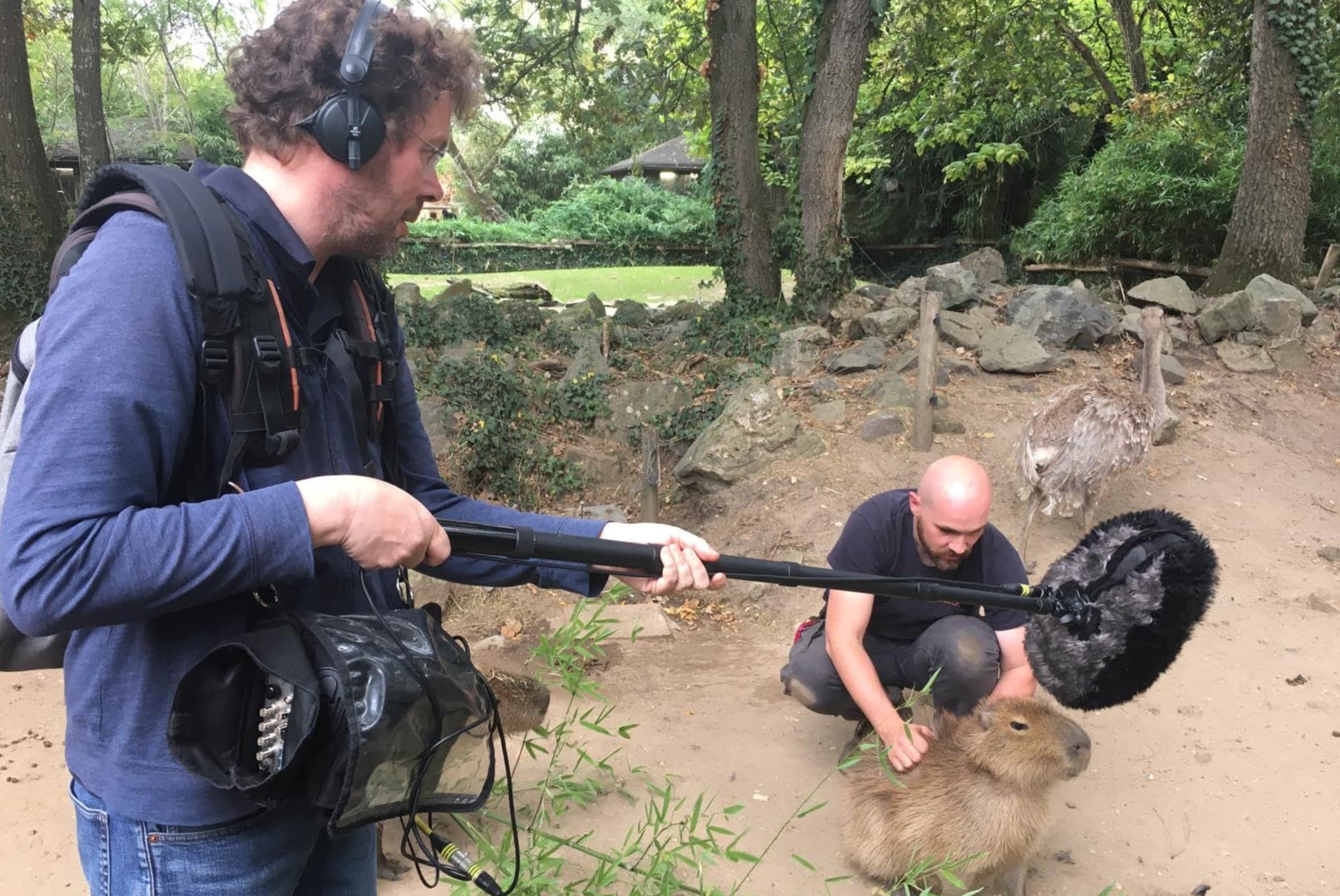Closed Captioning an Oscar winning film, “Flow”
A Sound-Driven Storytelling Challenge
Beyond Dialogue: Documenting Sound
When Matīss Kaža’s contacted us to close caption his 2025 Oscar winning Best Animated Feature, “Flow”, our team at Caption Easy knew that we had a challenge on our hands.
As a wordless narrative, this innovative production required us to completely reimagine traditional captioning methodologies to document a story told entirely through visuals, sound effects, and musical elements. The film’s subsequent critical acclaim and Oscar recognition validated not only the exceptional artistic vision of its creators but also the sophisticated technical solutions our team implemented to make this dialogue-free animation accessible to all audiences.
Traditional captioning frameworks rely heavily on spoken dialogue as narrative anchors. For “Flow,” we developed a comprehensive sound classification system that categorized each auditory element according to both technical characteristics and narrative function:
Character-Specific Vocalizations: Each of the film’s five animal protagonists required distinct sound identifying protocols. We established standardized descriptive terminology for each character’s unique vocalizations. The cat character alone demonstrated over 15 distinct vocalization types that required differentiation, including:
- Specific differentiation between emotional states (e.g.,
[CAT WHIMPERS],[CAT YOWLS],[CAT MEOWS],[CAT PURRS]) - Physiological sounds (e.g.,
[CAT SNIFFS],[CAT LICKS],[CAT SNORES]) - Alert/distress vocalizations (e.g.,
[CAT SCREECHES],[CAT SCREAMS]
Environmental Audio Mapping
Environmental sounds formed the ambient foundation of the film’s narrative, requiring precise documentation of natural elements:
- Ambient background layers (e.g.,
[BIRDS AND INSECTS CHIRPING AND TRILLING IN BACKGROUND]) - Atmospheric elements (e.g.,
[WATER RIPPLING]) - Distant sound sources (e.g.,
[DOGS BARKING IN DISTANCE])
These elements required careful differentiation from foreground sound elements to maintain proper hierarchical representation in the captioning.

Making Wordless Animation Accessible to All Viewers
Creating Equivalent Experiences for Hearing-Impaired Audiences
Ensuring accessibility for hearing-impaired viewers required innovative approaches that went beyond standard captioning practices. We developed specialized implementation strategies that preserved narrative comprehension without dialogue anchors:
- Contextual Descriptive Elements Our captioning included descriptive elements that conveyed narrative context through qualifiers and sound characteristics. For example, at 00:42:27,625 → 00:42:31,166, we documented
[GOLDEN DOG GRUNTS AND SQUEALS]rather than simply noting a dog sound, providing emotional context critical to understanding the scene. - Strategic Caption Placement The film’s visual composition required careful consideration of caption positioning to avoid obscuring critical visual elements. We implemented a dynamic placement protocol that adjusted caption positioning based on visual composition analysis, particularly important during the film’s underwater sequences and during complex multi-character interactions.
Solving Complex Captioning Problems in Animated Films
Handling Multiple Animal Sounds at Once
One of the most complex technical challenges involved documenting scenes with multiple overlapping animal vocalizations. Our traditional captioning frameworks weren’t designed to handle sequences with four or five distinct characters producing simultaneous sounds. We developed specialized notation strategies for these complex sequences:
- Sound Separation Techniques For sequences with multiple sounds from different characters, we implemented a hierarchical approach based on narrative prominence. At 01:18:37,791 → 01:18:39,291, we documented
[LEMUR CHIRPS]after[GOLDEN DOG BARKS]and[CAT WHIMPERS]to properly represent the sequence of vocalizations. - Compound Sound Documentation For simultaneous vocalizations, we developed a compound structure notation using connecting terms. For example, at 01:18:55,333 → 01:18:57,291, we documented
[GOLDEN DOG BARKS, CAT MEOWS]to represent the overlapping nature of these sounds.
Maintaining Consistent Sound Descriptions Throughout the Film
The film’s narrative structure often featured recurring sound patterns that required consistent documentation throughout the 85-minute runtime. We established a comprehensive sound continuity database that tracked:
- Character-Specific Sound Patterns Each character demonstrated distinct vocalization patterns that evolved throughout the film. The lemur character, for instance, progressed from simple
[LEMUR CHIRPS]at the beginning to more complex emotional expressions like[LEMUR CHITTERS AND SHRIEKS]as its character developed. - Environmental Sound Progression The film’s changing environments—from forest to ocean to mountain settings—required documentation of evolving ambient sound characteristics. We established environment-specific sound profiles for each major setting in the film, ensuring consistent representation of background elements.
- Musical Thematic Documentation Throughout the film, recurring musical motifs supported character development and emotional progression. Our captioning framework identified these thematic elements and maintained consistent documentation of their recurrence, particularly during the film’s climactic sequences.
Setting New Standards for Animation Captioning
The captioning implementation for “Flow” demanded innovation at every level of our technical process. By developing specialized documentation methodologies for this dialogue-free narrative, our team established new technical approaches for non-traditional animated features that have since influenced our broader captioning protocols.
The Academy Award recognition for “Flow” validates the exceptional artistic vision of Matīss Kaža and director Gints Zilbalodis, while also highlighting the importance of technical innovation in accessibility services. As animation continues to explore diverse storytelling approaches, Caption Easy remains committed to evolving our technical methodologies to ensure that groundbreaking content remains accessible to all viewers.
If you’d like to get a quote for closed captions please send the form below: